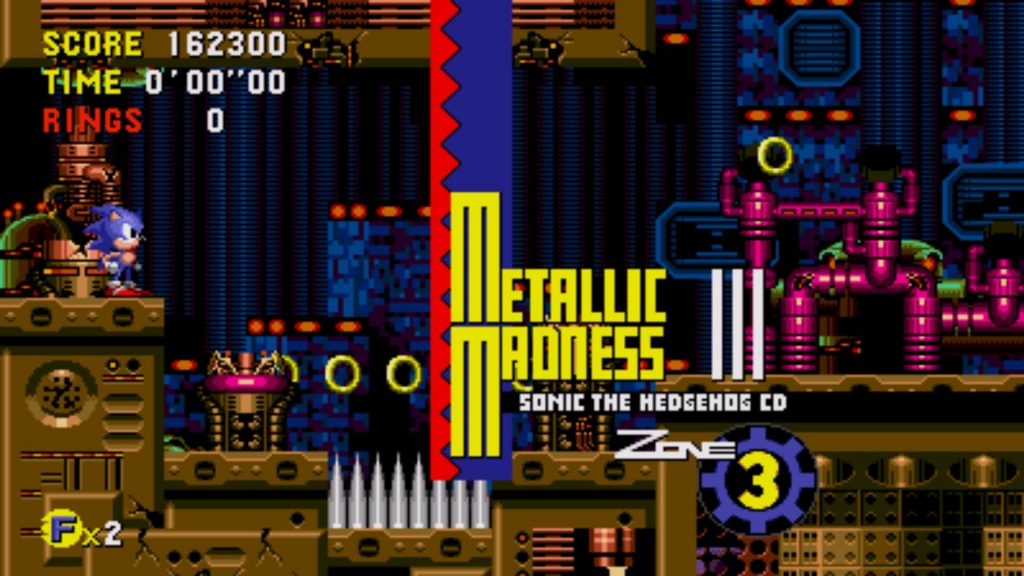When I was little, it took a few weeks of effort to finally crush Sonic CD into the dust. Robotnik defeated, Amy Rose saved, Metal Sonic destroyed–it was a moment of triumph. Put to the wayside, memories of Sonic CD warped and twisted with countless other Sonic titles, to the point where I began to think that my memories of time traveling and racing Metal Sonic were simply a fabrication I had created. When I happened to see “Sonic CD” available on Steam, it finally clicked. This was the Sonic game, my first Sonic game, that I had played 20 years ago. I hadn’t made it up after all. Today, I loaded it up to see just how much my “adult skill” matched up to my 2nd grade form. What took me weeks as a child took me 70 minutes in my living room with an X-Box controller. It was still fun though.

Sonic CD is much like any other game in the series. You run through loops, collect rings, move too fast to know where the heck you are going; the normal stuff. Being no stranger to the 2D Sonic platformers, I think this one is nearer to the top than others. As far as the staple principles of a Sonic platformer, it moves quickly, the levels are relatively interesting and open, and the pace of the game is, well, fast which is good. There are some interesting facets that set it apart though, the biggest of which is time travel. Scattered throughout the levels are signs that point to the future or past. Running by one and picking up enough speed will shoot you through time in the respective direction indicated. This means that each and every level in the game was designed both graphically and mechanically 3 different times, and at many places in the level you can swap between all three (past, present and future). Unfortunately, I’m not sure exactly what my motive for doing so is. Maybe if I was very familiar with the game I would have a preference for which time-period I enjoyed traveling through in a particular level, but because I have no idea what any of the time periods have in store, I just swapped them at random so I could see the different graphics and listen to the changed music.

The music, oddly, is worth mentioning. Sonic has always had pretty decent music, but Sonic CD stands apart in that its music is of a higher quality. Probably having something to do with the fact that it was on a CD and not a cartridge, the music widely ranges from calming to techno to funky. It doesn’t quite have that retro charm that say Sonics 1-3 have, but considering that each of the 3 time periods for each stage have their own music, it’s really interesting to hear how it is remixed to fit the new settings.

Collectively, Sonic CD is a good game and I would recommend it to any Sonic fan. It doesn’t take too long to beat, and even if the game doesn’t click entirely with you, the music is fun to listen to and there are even some nostalgic 90’s Sonic cartoon animations unique to the game that you get to watch. That being said though, the purpose of the time-traveling is a little confusing, and like most Sonic games, if you want the “good” ending, you have to collect the Chaos Emeralds–something that is equally unclear as to how to achieve. While I may not be particularly motivated to uncover all the game’s secrets, I believe the game has merit and belongs in Tier 2.
